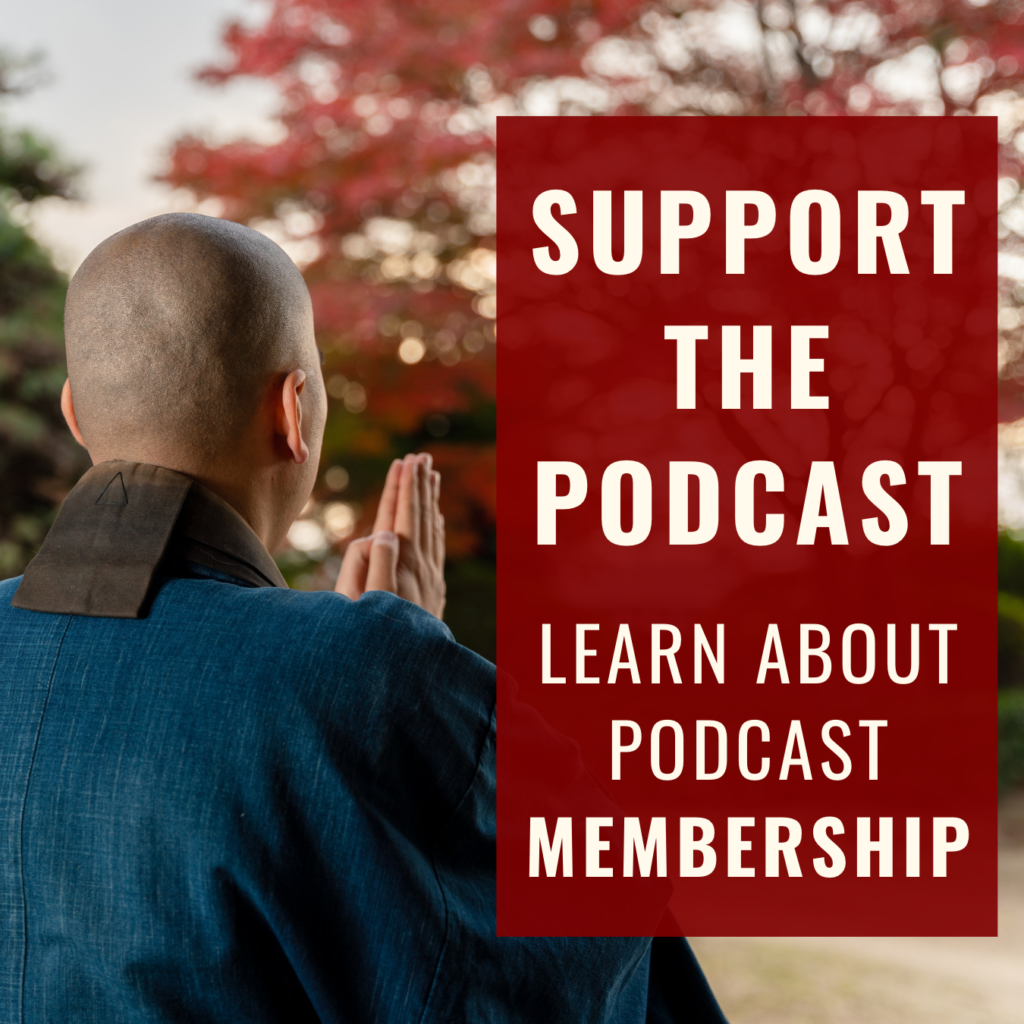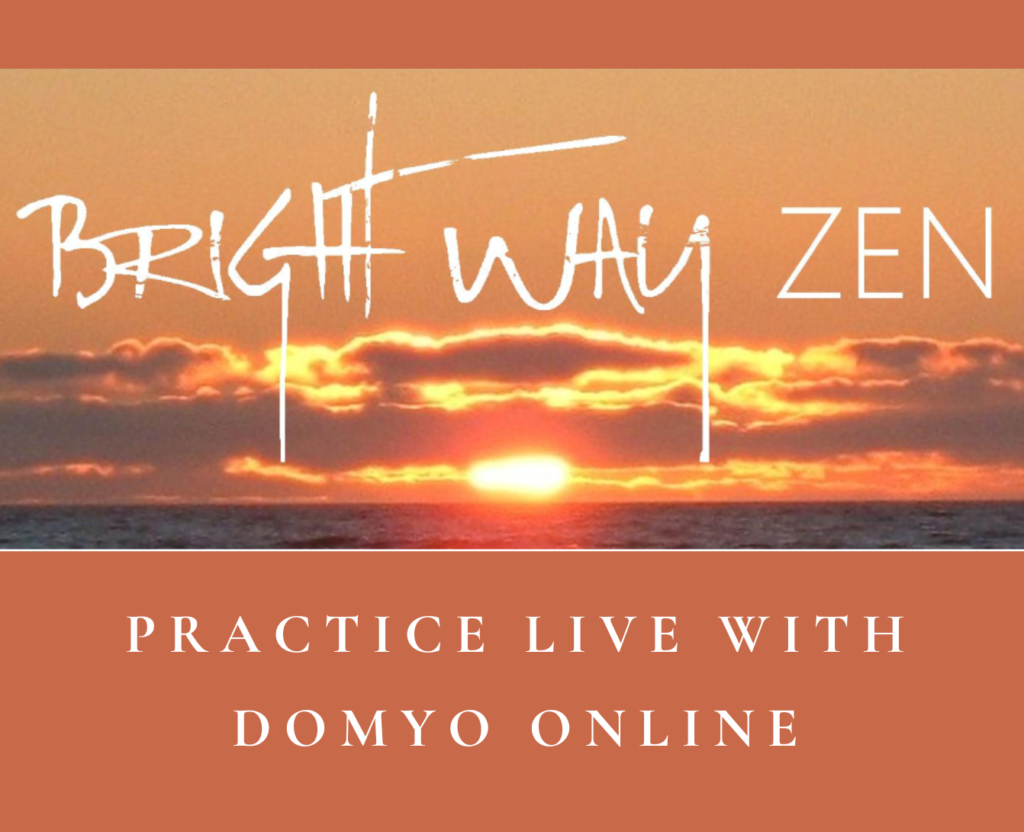
by Domyo | Aug 3, 2020 | Buddhist Practice, Buddhist Teachings
Whether you are personally intrigued by the concept of enlightenment or not, it is absolutely central to Buddhism. However, enlightenment – to use a kind of corny phrase – is not what you think. I’ll discuss sudden and gradual experiences of enlightenment, the changes such experiences bring about in us, and why it’s important for all of us to seek enlightenment.

by Domyo | Jul 24, 2020 | Buddhist Teachings
Humans evolved to make sense of their experience by explaining with a story, or narrative. Our stories range from obvious, long-standing narratives to subtle assumptions and categorizations. Although our stories help us communicate and navigate our lives, they also can preoccupy and burden us. Sometimes they are distressing, depressing, or exhausting to maintain. This is why, in a brief teaching meant to encompass the essence of practice, the Buddha said we should train ourselves such that “in the sensed, there is only the sensed, in the cognized, only the cognized.” That is, we should train ourselves to experience things without our stories.

by Domyo | Jun 22, 2020 | Buddhist Teachings
All religions and spiritual practices have two purposes: 1) To relieve our suffering and 2) give us hope. Buddhism is no different, teaching us that all we need to do is awaken to reality and we will be free and at ease. However, as Buddhists we sometimes emphasize “relieving suffering” and leave it unsaid that, after being freed from your suffering, you will perceive things in a way that gives you hope, inspiration, and solace. The Buddhist teaching of suchness arose a couple hundred years after the Buddha, at least in part to address the need some of us feel to hear descriptions of the positive aspect of reality from the beginning of our practice.

by Domyo | Jun 12, 2020 | Buddhism Today, Buddhist Teachings
Despite the placid appearance of most Buddha statues and the Buddhist precept against indulging anger, there is a place for fierceness and compassionate anger in Buddhism. Especially when we’re faced with injustice or need to protect others, we may need the energy of anger or fierceness to make ourselves heard. I discuss how respect for appropriate fierceness and anger appears in Buddhist iconography and mythology.

by Domyo | Mar 25, 2020 | Buddhist Practice, Buddhist Teachings
Buddhism’s central point is nothing other than impermanence, or the “Great Matter of Life-and-Death.” Our practice goes far beyond platitudes or beliefs meant to make you feel better about the whole affair. Instead, the essence of our practice is a direct and personal exploration of the experience and implications of being alive in a world where there is absolutely nothing unchanging for us to hold on to. Except, of course, that very fact, and the fact that being fully alive means we don’t hold on to anything at all.

by Domyo | Nov 2, 2019 | Buddhist Teachings
Nirvana, or nibbana, is the ultimate goal of original Buddhism and its modern representative, Theravadin Buddhism. Nibbana means “extinguished,” and attaining it means you have extinguished the “outflows” of sensuality, ignorance, and the desire for further existence. Someone who attains nibbana experiences ineffable peace and freedom, and a permanent state of human perfection. Achieving nibbana, however, is supremely difficult and usually takes many lifetimes. This episode familiarizes you the teachings about nibbana, discusses some of the implications for Buddhist practice, and points out how views of nibbana are one of the fundamental differences between Theravada and Mahayana forms of Buddhism.

by Domyo | Aug 16, 2019 | Buddhist Teachings
We do not have retreat from appreciation of conditional or material things in order to live an enlightened life. However, we must diligently turn the lens of practice onto all of our relationships to things and to beings. Learning to see and accept the impermanence of all things and yet to “enjoy them incredibly” is a wonderful practice opportunity.

by Domyo | Aug 10, 2019 | Buddhism Today, Buddhist Teachings
What does Buddhism have to say about mass shootings? Of course, traditional Buddhism doesn’t say anything about mass shootings per se, but it does present teachings on human nature, behavior, and choices. In this episode I discuss the Buddhist of view of how and why people do horrible things, pointing out how Buddhism is realistic but also optimistic, and how a Buddhist view can help relieve some of our fear and despair.

by Domyo | Jul 30, 2019 | Buddhist Teachings
There are many places in the Pali Canon where the Buddha mentions the “Five Skandhas,” or aggregates, which are basically the five aspects of a human being: Form, or the body; Feelings, or our basic positive, negative, or neutral reactions to stimuli; Perception, the basic process of labeling or identifying things; Consciousness, our awareness of sights, sounds, smells, tastes, touch, and thoughts; and Mental Fabrications, all of our active processes of mind. The Five Skandhas, as I’ll explain, aren’t so much a teaching in and of themselves as they are a tool for exploring the teaching of Anatta, or not-self.

by Domyo | Mar 30, 2019 | Buddhist Teachings
The Buddha taught that there are five main “hindrances” we encounter in our spiritual practice: 1) Worldly desire; 2) ill-will; 3) sloth-and-torpor; 4) restlessness-and-worry, and 5) uncertainty (or skeptical doubt). In this 3rd episode of 3, I go into detail about sloth-and-torpor, restlessness-and-worry, and uncertainty, and recommended ways to abandon them.

















